 W
WThe Altai mole or Siberian mole is a species of mole in the family Talpidae. It is found throughout the taiga zone of south-central Siberia in Russia, as far south as northern Mongolia and Kazakhstan.
 W
WThe Anderson's shrew mole is a species of mammal in the family Talpidae. It is endemic to China. Its species name "andersoni" was chosen to honor American scientific collector Malcolm Playfair Anderson.
 W
WAtelerix is a genus of hedgehog in the family Erinaceidae. It contains four species, all native to Africa.
 W
WThe Balkan mole is a species of mammal in the family Talpidae. It is found in Montenegro, Albania, North Macedonia and Greece, including the island of Corfu.
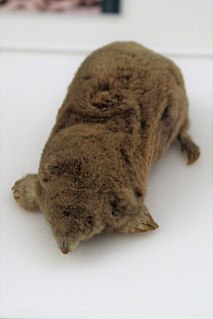 W
WThe blind mole, also known as the Mediterranean mole, is a mole found in the Mediterranean region. It is similar to the European mole, differing most prominently in having eyes covered with skin. It is found in Albania, France, Greece, Italy, Monaco, Montenegro, San Marino, Serbia, Slovenia, Switzerland, and Turkey. It is typically carnivorous in nature. Individuals can grow up to 12 cm in length.
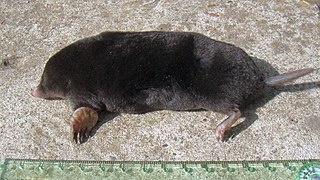 W
WThe Caucasian mole is a mammal in the family Talpidae that is endemic to the Caucasus Mountains of Russia and Georgia.
 W
WThe Chinese shrew mole is a species of mammal in the family Talpidae. It is endemic to China, Sichuan Province. Its natural habitat is temperate forests.
 W
WThe Daurian hedgehog is a solitary small hedgehog. It is listed in the Red book of Russian Federation as a protected species with an unclear status, generally considered to be endangered, although the IUCN lists it as "least concern". It populates the Transbaikal region of Russia and Northern Mongolia. It lives in dens and inhabits both forests and steppes. The steppes consists mainly of grassland plains and scrublands. The Daurian hedgehog actively select scrublands and rocky areas, perhaps for greater cover and concealment from predators. This species of hedgehogs are known to utilize larger home ranges than other hedgehog species. The adult Daurian hedgehog is 15 to 20 centimeters long and weighs up to 1 kilogram. Most live up to six years in nature. Like most hedgehog species in temperate regions, the Daurian hibernates during the winter.
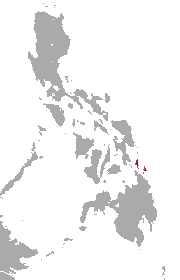 W
WThe Dinagat gymnure is a species of mammal in the family Erinaceidae. It is endemic to the Philippines.
 W
WThe dwarf gymnure is a gymnure found only at Mount Kerinci, Sumatra, Indonesia. It is listed by the International Union for Conservation of Nature as a critically endangered species due to a restricted range.
 W
WThe Echigo mole is an endangered species of mammal in the family Talpidae. It is endemic to Japan, being found only on the Echigo plain, Niigata prefecture.
 W
WEulipotyphla is an order of mammals suggested by molecular methods of phylogenetic reconstruction, and includes the laurasiatherian members of the now-invalid polyphyletic order Lipotyphla, but not the afrotherian members. Lipotyphla in turn had been derived by removing a number of groups from Insectivora, the previously used wastebasket taxon.
 W
WEuroscaptor is a genus of mammal in the family Talpidae. Members are found in China and South & Southeast Asia. It contains the following species as of October 2021:Greater Chinese mole Kloss's mole Kuznetsov's mole Long-nosed mole Malaysian mole Himalayan mole Ngoc Linh mole Orlov's mole Small-toothed mole Vietnamese mole
 W
WThe Gansu mole is a species of mammal in the family Talpidae endemic to central China, where it occurs in Shaanxi, Gansu, Sichuan, and Qinghai. It is the only species in the genus Scapanulus.
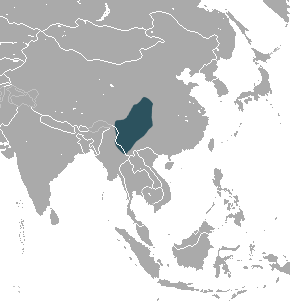 W
WThe gracile shrew mole is a species of mammal in the family Talpidae. It is endemic to China; populations known from Myanmar likely represent other species.
 W
WThe greater Chinese mole is a species of mammal in the family Talpidae. It is found in China and potentially Myanmar.
 W
WThe greater Cuban nesophontes is an extinct species of eulipotyphlan that was native to Cuba. It is thought that the introduction of rats lead to its demise.
 W
WThe Hainan gymnure or Hainan moonrat is a species of mammal in the family Erinaceidae. Its natural habitat is subtropical or tropical dry forests. It was thought to be endemic to the island of Hainan, China where it is threatened due to habitat loss, but in 2018 was found to also occur in, and be rather common, within Northern Vietnam.
 W
WThe bare-bellied hedgehog, also known as the Madras hedgehog, is a species of hedgehog that is endemic to dry arid regions and scrubby jungles in southeastern India. As it was believed to be rare, it was formerly listed as Vulnerable by the IUCN. It is now known to be locally common in the Indian states of Andhra Pradesh and Tamil Nadu, resulting in its new listing as a species of Least Concern. Hedgehogs are protected species under schedule IV of Wildlife Protection Act (1972).
 W
WBrandt's hedgehog is a species of desert hedgehog native to parts of the Middle East and Central Asia. Its common name derives from its having first been described by Johann Friedrich von Brandt, a director of the Zoological Department at the St Petersburg Academy of Sciences.
 W
WThe Somali hedgehog is a species of mammal in the family Erinaceidae. It is endemic to Somalia and Somaliland. The Somali hedgehog is nocturnal.
 W
WThe northern white-breasted hedgehog is a species of hedgehog.
 W
WThe southern white-breasted hedgehog, sometimes referred to as white-bellied hedgehog or white-chested hedgehog, is a hedgehog native to Eastern Europe and Southwestern Asia.
 W
WHemiechinus is a genus of hedgehogs. It contains two species, found in Central and South Asia.
 W
WThe Himalayan mole or short-tailed mole is a species of mammal in the family Talpidae.
 W
WHugh's hedgehog, also sometimes referred to as the central Chinese hedgehog, is native to central China and Manchuria. It prefers open areas of dry steppe, but can be found in shrubland and forests. It is known to look for food even in daytime on rainy days.
 W
WHylomys is a small genus of the family Erinaceidae. Hylomys species, like all species in the subfamily Galericinae, are known as gymnures or moonrats. Their closest relatives include the fossil Lantanotherium and Thaiagymnura and the living Neotetracus and Neohylomys.
 W
WThe inquisitive shrew mole is a species of mammal in the family Talpidae. It is only known from Yunnan province of China, although its range is thought to extend over the border into Myanmar.
 W
WThe insular mole is a species of mammal in the family Talpidae. It is restricted to Hainan Island and Taiwan, where it is also known as the Formosan blind mole. The species was first described by Robert Swinhoe in 1863.
 W
WThe Japanese mole, also known as Temminck's mole, is a species of mole endemic to Japan. A solitary and diurnal species, it can live for up to 3.5 years in the wild.
 W
WThe Japanese mountain mole is a species of Old World mole in the family Talpidae. It is endemic to Japan. It is the only member of the monotypic genus Oreoscaptor. Its natural habitats are temperate forests and temperate grassland.
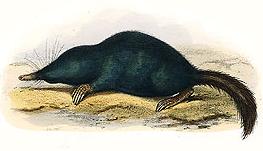 W
WThe Japanese shrew mole or himizu (ヒミズ) is a species of mammal in the family Talpidae. It is endemic to Japan and is found on Honshu, Shikoku, Kyushu, Awaji Island, Shodo Island, Oki Islands, Tsushima Island, Goto Islands, Mishima Island, and Awashima Island, but is absent from Hokkaido, which is north of Blakiston's Line. It is one of three Urotrichini and it is the only species in the genus Urotrichus. It is common between sea level and approximately 2,000 m.
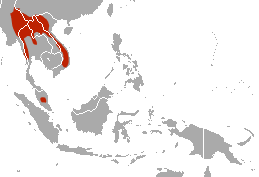 W
WKloss's mole is a species of mammal in the family Talpidae. It is found in Laos and Thailand. It was named after zoologist C. Boden Kloss.
 W
WThe Levant mole is a species of mammal in the family Talpidae. It is found in Armenia, Azerbaijan, Georgia, Russia, and Turkey.
 W
WThe long-nosed mole is a species of mammal in the family Talpidae. It is endemic to China, where it has a widespread distribution.
 W
WThe long-tailed mole is a species of mole in the family Talpidae. It is found in China, Vietnam and Myanmar.
 W
WThe Medog mole is a species of mammal in the family Talpidae. It is the only member of the genus Alpiscaptulus. It is endemic to Tibet, where it is only found in the vicinity of Namcha Barwa in Medog County.
 W
WParaechinus is a genus of hedgehogs. Members are small and nocturnal. The genus contains four species from North Africa, the Middle East and South Asia:Desert hedgehog Brandt's hedgehog Indian hedgehog Bare-bellied hedgehog
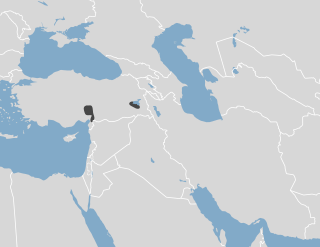 W
WPère David's mole is a mole found in the Middle East, ranging from south-central Turkey east to Kurdistan Province, Iran, although it could also range south into Syria. It is listed as a data deficient species. The species is named after the zoologist Armand David. As T. streeti, it is known as the Persian mole.
 W
WThe Puerto Rican nesophontes, or Puerto Rican shrew, is an extinct eulipotyphlan endemic to Puerto Rico.
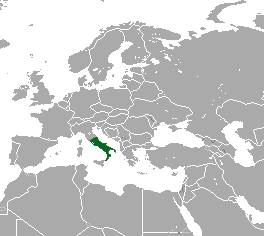 W
WThe Roman mole is a species of mammal in the family Talpidae. It is found in southern Italy. It was last recorded on Sicily in 1885. There is also an unconfirmed report about an isolated subpopulation in the Var region of southern France.
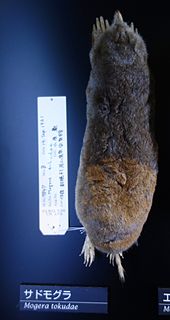 W
WThe Sado mole or Tokuda's mole is a species of mammal in the family Talpidae. It is endemic to Sado Island, Japan.
 W
WThe Scalopinae, or New World moles, are one of three subfamilies of the family Talpidae, which consists of moles and mole-like animals; the other two subfamilies being the Old World talpids and the Chinese shrew-like moles (Uropsilinae). The Scalopinae are the only Talpidae subfamily to consist entirely of undisputed moles and no mole-like close relatives such as shrew-moles or desmans.
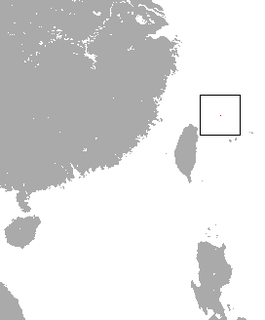 W
WThe Senkaku mole, also known as the Ryukyu mole, is a species of mammal in the family Talpidae. It was formerly classified as being the only species in the genus Nesoscaptor. It is endemic to the Uotsuri-jima of the disputed territory of Senkaku Islands, also known as the Diaoyutai Islands. It is most similar to the Insular mole of Taiwan and Mainland China.
 W
WThe short-faced mole is a species of mammal in the family Talpidae. It is monotypic within the genus Scaptochirus. It is endemic to China.
 W
WThe short-tailed gymnure is a small mammal from the family of the Erinaceidae. The scientific name of the species is first published by Salomon Müller in 1840.
 W
WThe shrew gymnure, or shrew hedgehog, is a species of mammal in the family Erinaceidae and is the only extant species in the genus Neotetracus. It is found in China, Myanmar, and Vietnam.
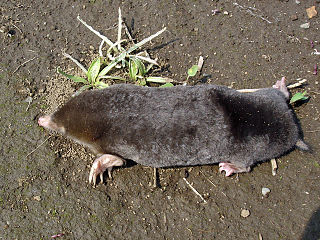 W
WThe small Japanese mole is a species of mammal in the family Talpidae. It is endemic to Japan. Even though they are extinct in central Tokyo, they are found in the grounds of the Imperial Palace.
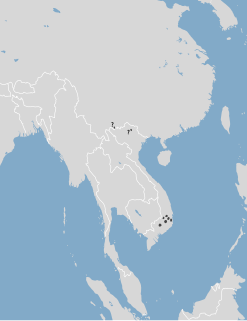 W
WThe small-toothed mole is a species of mammal in the family Talpidae. It is found in Di Linh, in southern Vietnam, and Rakho near the border of Vietnam and China, and in southern Yunnan, China, near the Vietnamese border. It is likely that it has a broader distribution, especially in places between the currently known locations.
 W
WSolenodon is a genus of mammal, one of only two in the family Solenodontidae. According to the American Society of Mammalogists, it includes 3 species known to have existed in recent times, of which only one is extant.
 W
WThe Spanish mole is a species of mammal in the family Talpidae. It is found in Portugal and Spain.
 W
WTalpa is a genus in the mole family Talpidae. Among the first taxa in science, Carolus Linnaeus used the Latin word for "moles", talpa, in his Regnum Animale to refer to the commonly known European form of mole. The group has since been expanded to include 13 extant species, found primarily in Europe and western Asia. The European mole, found throughout most of Europe, is a member of this genus, as are several species restricted to small ranges. One species, Père David's mole, is data deficient. These moles eat earthworms, insects, and other invertebrates found in the soil.
 W
WThe Townsend's mole is a fossorial mammal in the family Talpidae, and is the largest North American mole. It was named after the American naturalist John Kirk Townsend. The name was selected at the request of Thomas Nuttall as a patronym to honor Townsend's contribution.
 W
WTrue's shrew mole is a species of mammal in the family Talpidae. It is endemic to Japan and is a common species above 1000 meters in grassland, shrubland and forest.
 W
WThe shrew moles or shrew-like moles (Uropsilus) are shrew-like members of the mole family of mammals endemic to the forested, high-alpine region bordering China, Myanmar, and Vietnam. They possess a long snout, a long slender tail, external ears, and small forefeet unspecialized for burrowing. Although they are similar to shrews in size, external appearance, and, presumably, ecological habits, they are nevertheless talpids and considered true moles, as they share a full zygomatic arch with all other moles, while this arch is completely absent in shrews.
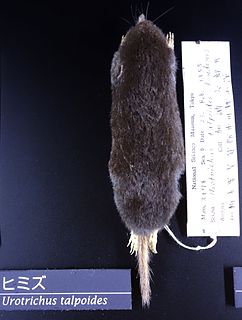 W
WUrotrichus is a genus of talpid that contains a single living species, the Japanese shrew mole (Urotrichus talpoides). Two fossil species are also known.
 W
WThe Vietnamese mole is a species of talpine mole found in Vietnam.
 W
WThe western Cuban nesophontes is an extinct species of mammal in the family Nesophontidae. It was found on Cuba and Hispaniola. It was recently discovered to include three previously thought species: N. submicrus, N. longirostris, and N. superstes.
 W
WThe white-tailed mole is a species of mammal in the family Talpidae. It is found in Bangladesh, China, India, and Myanmar.